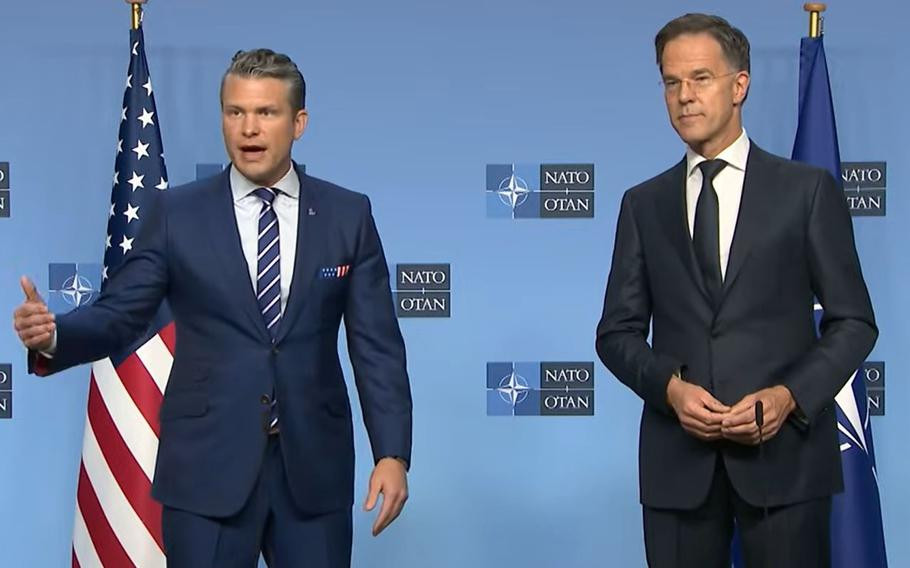
Defense Secretary Pete Hegseth calls on NATO countries to step up support for Ukraine.
Defense Secretary Pete Hegseth called on NATO countries Wednesday to step up support for Ukraine, saying the more American-made weaponry that can be directed at Russian forces, the better the odds of ending a war that has raged for over three years.
“Our expectation today is that more countries donate even more, that they purchase even more, to provide for Ukraine, to bring that conflict to a peaceful conclusion,” Hegseth said at the start of high-level talks in Brussels.
The meeting at the bloc’s headquarters also marks the first gathering of allied defense leaders since a series of Russian drone and fighter plane intrusions on NATO territory last month.
During the one-day ministerial, allies were expected to discuss how NATO should respond to future incursions. Some members have called for a tougher stance, such as automatic shootdown of any Russian aircraft that ventures into NATO airspace.
NATO Secretary-General Mark Rutte has downplayed the use of such an approach, saying military commanders need to determine how to respond on a case-by-case basis. Still, there are questions as to whether NATO’s top military commander, U.S. Air Force Gen. Alexus Grynkewich, has sufficient authority to shoot when deemed necessary.
NATO countries can put “caveats,” or certain restrictions, on how their military assets may be used while under the alliance’s command. Matthew Whitaker, the U.S. ambassador to NATO, said fewer restrictions are necessary.
“It’s no secret that the more national caveats there are on especially our fighter jet assets, the harder it is for (Grynkewich) to respond immediately,” Whitaker told reporters ahead of Wednesday’s ministerial.
Conversations are ongoing about how to give Grynkewich more flexibility, Whitaker said.
Hegseth’s comments regarding support for Ukraine come as President Donald Trump grows increasingly frustrated with his Russian counterpart, Vladimir Putin. On Sunday, Trump floated the possibility of sending long-range Tomahawk missiles to Ukraine.
In July, the bloc announced the new Prioritized Ukraine Requirement List. It enables allies to buy American weapons, which NATO in turn delivers to Ukraine. The initiative has generated about $2 billion in weapons purchases so far. But NATO has seen a reduction in overall contributions from allies to the Ukrainian war effort in recent months.
More robust support would increase the chances of forcing Russia to the negotiating table, Hegseth said.
“You get peace when you are strong ... when you have strong and real capabilities that adversaries respect, and I believe that’s what NATO is doing,” he said in reference to the Prioritized Ukraine Requirement List.
Hegseth drew a comparison between the wars in Gaza and Ukraine, saying Trump’s approach to securing a ceasefire between Israel and Hamas has the potential to extend to Russia and Ukraine.
“I think the world is seeing that we have a peace president … which is what we saw (in Gaza) and I hope we can see in Ukraine,” Hegseth said. Defense officials from Ukraine also were on hand for the Brussels talks, which Rutte said would center on how to get more high-demand military hardware into Ukraine.
“This is crucial stuff, including air defense systems and particularly interceptors, important for Ukraine to make sure that their civilian population, their crucial infrastructure, is as much protected as possible against the continuous Russian onslaught,” Rutte said.
- Security

